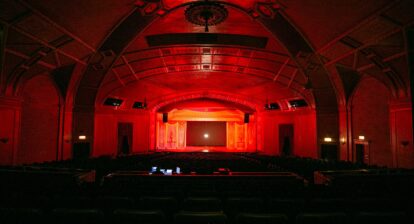Nearly all arts, culture and heritage industries showed signs of recovery in July 2020. Employment in performing arts industries is still 23% below pre-COVID levels, but hours worked continued to rebound.
In order to provide a detailed picture of job losses in the arts, culture and heritage sub-sectors during the COVID-19 crisis, CAPACOA licenced access to custom employment statistics from Statistics Canada. These statistics are from the Labour Force Survey, a monthly survey of approximately 56,000 households. They provide an account of employment for full-time, part-time and occasional employees, as well as self-employed workers.
Key findings for July 2020
- Employment increased in nearly all arts, culture, heritage and related industries in July 2020. This is partly consequential to seasonal variations, but it nonetheless represents an actual rebound for many industries.
- Employment in information and cultural industries [51] has fully rebounded and is now 6.0% above pre-COVID level. Publishing industries is the only sub-sector still below pre-COVID level (-13.7%). Total actual hours worked in information and cultural industries are now essentially the same as before the COVID.
- Employment in the arts, entertainment and recreation sector [71] increased 18.7% compared to June, but it still remains 27.6% below pre-COVID level.
- Total actual hours worked increased significantly across all arts, entertainment and recreation sub-sectors in July 2020. However, actual hours worked in the arts, entertainment and recreation sector was still 40.7% lower than a year ago for the same period. This is well below the all-industries average (9.9%) and lower than any other sector, including accommodation and food services (-23.1%).
- Amusement, gambling and recreation industries [713] saw the largest month-to-month employment increase (27.9%). Employment is now 30.7% below pre-COVID level, which is a significant improvement compared to June.
- Heritage institutions [712] are showing encouraging signs of recovery. This sub-sector saw significant increases in both the number of employees (19.8%) and total actual hours worked (21.6%) in July.
- Performing arts, spectator sports and related industries [711] had the smallest month-to-month increase (3.6%, not statistically significant). Employment remains 23.1% below pre-COVID level.
- Workers in performing arts, spectator sports and related industries [711] worked 44.2% fewer hours in July 2020 than in July 2019. Although this is an improvement over last months, this sub-sector still displays the lowest number of hours worked compared to pre-COVID level.
Table 1 – Employment estimates (x 1,000), by selected industries, Canada, unadjusted for seasonality
| Industry (with NAICS classification) | Employment July 2020 (x1,000) | c. previous month (x1,000) | c. previous month (%) | July 2020 c. July 2019 (x1,000) | July 2020 c. July 2019 (%) |
|---|---|---|---|---|---|
| Total, all industries | 18069.6 | 291.8 | 1.6% | -1214.2 | -6.3% |
| 51, 71 Information, culture and recreation 1 | 755.5 | 77.3 | 11.4% | -130.7 | -14.7% |
| 51 Information and cultural industries | 359.3 | 14.8 | 4.3% | 20.2 | 6.0% |
| 71 Arts, entertainment and recreation | 396.2 | 62.5 | 18.7% | -150.9 | -27.6% |
| 711 Performing arts, spectator sports and related industries | 118.5 | 4.1 | 3.6% | -35.5 | -23.1% |
| 7111 Performing arts companies 2 | 23.4 | 4.1 | 21.2% | -11.8 | -33.5% |
| 7112 Spectator sports 2 | 7.2 | -1.9 | -20.9% | -18 | -71.4% |
| 7113 Promoters (presenters) of performing arts, sports and similar events 3 | x | x | x | x | x |
| 7114 Agents and managers for artists, athletes, entertainers and other public figures 3 | x | x | x | x | x |
| 7115 Independent artists, writers and performers | 77.2 | 2.9 | 3.9% | 2.1 | 2.8% |
| 712 Heritage institutions | 40.6 | 6.7 | 19.8% | -10.3 | -20.2% |
| 713 Amusement, gambling and recreation industries | 237.2 | 51.7 | 27.9% | -105.1 | -30.7% |
Notes
- This series aggregates two distinct industry classifications. Statistics Canada aggregates culture industries in such a way in order to ensure data quality at small geographic levels. This aggregated series is included in order to enable some degree of comparisons with data tables published by Statistics Canada.
- The sample for this series is small, but data accuracy is acceptable.
- The sample for this series is too small and there is significant month-to-month variation. Data is not accurate enough for release.
Table 2 – Total actual hours worked estimates (x 1,000), by selected industries, Canada, unadjusted for seasonality
| Industry (with NAICS classification) | Total actual hours (x1,000), July 2020 | c. previous month (%) | July 2020 c. July 2019 (%) |
|---|---|---|---|
| Total, all industries | 544299.8 | -3.0% | -9.9% |
| 51, 71 Information, culture and recreation 1 | 20954.7 | 11.9% | -24.0% |
| 51 Information and cultural industries | 11296.2 | 0.3% | 0.2% |
| 71 Arts, entertainment and recreation | 9658.5 | 29.5% | -40.7% |
| 711 Performing arts, spectator sports and related industries | 2337.4 | 12.4% | -44.2% |
| 7111 Performing arts companies 2 | 371.9 | 24.5% | -63.2% |
| 7112 Spectator sports 2 | 230.1 | -22.3% | -67.5% |
| 7113 Promoters (presenters) of performing arts, sports and similar events 3 | x | x | x |
| 7114 Agents and managers for artists, athletes, entertainers and other public figures 3 | x | x | x |
| 7115 Independent artists, writers and performers | 1499.4 | 21.5% | -19.2% |
| 712 Heritage institutions | 1372.3 | 21.6% | -15.5% |
| 713 Amusement, gambling and recreation industries | 5948.8 | 39.9% | -43.2% |
Notes
- This series aggregates two distinct industry classifications. Statistics Canada aggregates culture industries in such a way in order to ensure data quality at small geographic levels. This aggregated series is included in order to enable some degree of comparisons with data tables published by Statistics Canada.
- The sample for this series is small, but data accuracy is acceptable.
- The sample for this series is too small and there is significant month-to-month variation. Data is not accurate enough for release.
Additional notes to readers
- “Employment” includes full-time, part-time and occasional employees, as well as self-employed workers who worked during the reference week, no matter how many hours. Certain sub-sectors that include a large proportion of self-employed workers, for example independent artists, may therefore not show a significant drop because those freelance workers may still have been considered “working”.
- “Total actual hours worked” is a good indicator of the impacts of COVID-related restrictions on the labour force, because it offers an account of both the number of employed workers and the hours they worked. It is a particularly relevant indicator for sub-sectors that include a lot of freelance and occasional workers (and who may be deemed as “employed” even if they only worked a few hours during the reference period). For example, employment among independent artists dropped only -1.1% between June 2020 and June 2019. However, actual hours worked dropped 35.9% over the same period.
- These statistics are not adjusted for seasonality (whereas many Statistics Canada tables are). Many culture industries are subject to significant seasonal variations. In order to have a fair estimation of employment change compared to pre-COVID level, it is therefore preferable to establish comparisons with the same period in 2019 rather than with February 2020.
More information
More statistics from the Labour Force Survey in The Daily
Employment in arts and culture industries, June 2020
Prepared by: Frédéric Julien, Director of Research and Development.








